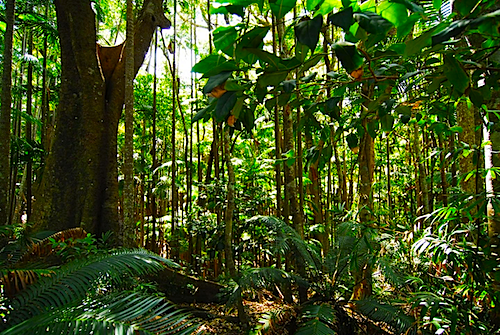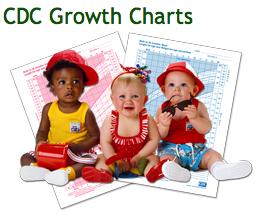|
|
Developmental Biology - Earth's 6th Extinction Event
One in Three Plants & Animals to Disappear by 2070
University of Arizona researchers predict one third of plants and animal species will be extinct from climate changes by 2070...
Accurately predicting biodiversity loss from climate change requires a detailed understanding of what aspects of climate change cause extinction — and what mechanisms might allow species to survive.
By combining data on current extinctions, rates of species movement around the world, and projections of future climate changes, the UA researchers estimated that one in three species of plants and animals alive today face extinction. This conclusion is based on data from hundreds of plant and animals surveyed around the globe.
Research results are published in the Proceedings of the National Academy of Sciences, PNAS, and may be the first to estimate broad-scale extinction patterns from climate change incorporating (1) data from recent climate-related extinctions along with (2) the rates of species movements.
To estimate the rates of future extinctions from climate change, Cristian Román-Palacios and John J. Wiens, both in the Department of Ecology and Evolutionary Biology at the University of Arizona, looked to the recent past. Specifically, they examined local extinctions already having happened, based on repeat surveys of plants and animals over time.
They analyzed data from 538 species and 581 world sites, surveying plant and animal species at least 10 years apart and generating climate data from the earliest to the most recent site. Altogether, they found 44% of the 538 species had already become extinct at one or more locations.
"By analyzing the change in 19 climatic variables at each site, we could determine which variables drive local extinctions and how much change a population can tolerate without going extinct.
We also estimated how quickly populations move to try and escape rising temperatures. When we put all of these pieces of information together for each species, we came up with detailed estimates of global extinction rates for hundreds of plant and animals."
Cristian Román-Palacios PhD, Department of Ecology and Evolutionary Biology, University of Arizona, Tucson, Arizon, USA.
Identifying maximum annual temperatures - the hottest daily highs in summer - was key in determining whether a population will become extinct. Surprisingly, average temperatures reflected smaller changes in local extinction rates, even though average temperatures are widely used as a proxy for overall climate change.
"This means that using changes in mean annual temperatures to predict extinction from climate change might be positively misleading."
John J. Wiens PhD, Department of Ecology and Evolutionary Biology, University of Arizona, Tucson, Arizona, USA.
Previous studies have focused on dispersal - or migration to cooler habitats - as a means for species "escape" from warming climates. However, the authors found most species will not be able to disperse quickly enough to avoid extinction, based on past rates of movement.
Instead, many species were able to tolerate some increases in maximum temperatures. However, about 50% of species had local extinctions if maximum temperatures increased by no more than 0.5 degrees Celsius, and 95% if temperatures increased by more than 2.9 degrees Celsius.
"In a way, it's a 'choose your own adventure.' If we stick to the Paris Agreement to combat climate change, we may lose fewer than two out of every 10 plant and animal species on Earth by 2070. But if humans cause larger temperature increases, we could lose more than a third or even half of all animal and plant species, based on our results."
John J. Wiens PhD.
Projections of Species Loss
"A big problem is that the majority of plant and animal species loss occurs in the tropics," explains Román-Palacios. Projection for species loss is similar in plants and animals. But, losses are projected to be two to four times more common in hot tropic zones than in temperate regions.
Significance
Human impacts and climatic changes are widely considered to be responsible for rapid species extinction. However, determining their effects is challenging owing to the lack of long-term spatial–temporal data. In this study, we quantified the distinctive associations of anthropogenic and climatic stressors with the local extinction of 11 medium- or large-sized mammals using historical records over the past 3 centuries. We found that the increased local extinction of mammals was associated with intensified human disturbance (particularly for large-sized mammals) and with extreme temperature change (both cooling and warming). Our results provide insight into biodiversity conservation during the Anthropocene.
Abstract
Climate change may be a major threat to biodiversity in the next 100 years. Although there has been important work on mechanisms of decline in some species, it generally remains unclear which changes in climate actually cause extinctions, and how many species will likely be lost. Here, we identify the specific changes in climate that are associated with the widespread local extinctions that have already occurred. We then use this information to predict the extent of future biodiversity loss and to identify which processes may forestall extinction. We used data from surveys of 538 plant and animal species over time, 44% of which have already had local extinctions at one or more sites. We found that locations with local extinctions had larger and faster changes in hottest yearly temperatures than those without. Surprisingly, sites with local extinctions had significantly smaller changes in mean annual temperatures, despite the widespread use of mean annual temperatures as proxies for overall climate change. Based on their past rates of dispersal, we estimate that 57–70% of these 538 species will not disperse quickly enough to avoid extinction. However, we show that niche shifts appear to be far more important for avoiding extinction than dispersal, although most studies focus only on dispersal. Specifically, considering both dispersal and niche shifts, we project that only 16–30% of these 538 species may go extinct by 2070. Overall, our results help identify the specific climatic changes that cause extinction and the processes that may help species to survive.
Authors
Xinru Wan, Guangshun Jiang, Chuan Yan, Fangliang He, Rongsheng Wen, Jiayin Gu, Xinhai Li, Jianzhang Ma, Nils Chr. Stenseth, and Zhibin Zhang.
Acknowledgments
This work was supported by the National Key R&D Program of China (2017YFA0603304), the Strategic Priority Research Program of the Chinese Academy of Sciences (XDB31000000), and the International Society of Zoological Sciences/International Union of Biological Sciences Program of Biological Consequence of Global Change. F.H. acknowledges the support of the Natural Sciences and Engineering Research Council of Canada.
Return to top of page.
| |
|
Feb 17 2020 Fetal Timeline Maternal Timeline News
 Mass extinction is scary as we are actually living through this one - Earth's sixth mass extinction so far. Past mass extinctions were triggered by cataclysmic events, this is the only one caused by humans alone. CREDIT FLICKR WANDERINGSEOUL61
|



